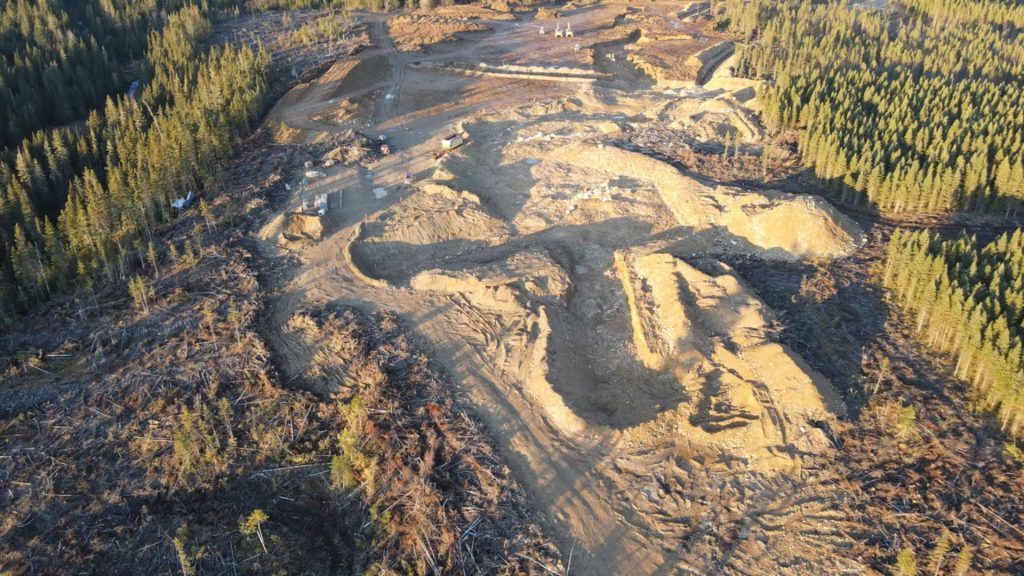Puma Exploration samples 72 g/t gold at Williams Brook, New Brunswick

Puma Exploration Inc. [TSXV-PUMA; OTCQB-PUMXF] reported surface sampling results from its ongoing 2024 exploration program at its Williams Brook Gold Project located in New Brunswick, Atlantic Canada.
A grab sample returned 72.0 g/t gold in a new area located 10 km NE from the Lynx Gold Zone (LGZ) along a potential trend that includes the Jaguar and Cougar gold zones.
This quartz-rhyolite-limonite-sericite subcrop returned the highest gold assay from surface sampling outside the LGZ. Previous drilling along the 4 km-long Lynx Gold Trend has confirmed that surface sampling is a strong vector for targeting gold mineralization at depth. Puma’s work has found that surface sampling grades translate to similar grades subsurface.
Marcel Robillard, President and CEO, stated: “Work on the Williams Brook Project has been ongoing since the beginning of the summer with two exploration teams undertaking surface work on more than 20 priority targets throughout the land package. This latest finding continues to highlight the potential scale of our flagship project and further supports our work of the last four years. We’ve always maintained that a large orogenic gold system is at play here. These latest findings continue to support our hypothesis.”
The ongoing surface exploration program in 2024 uncovered several large quartz outcrops and subcrops in an area that was never explored before, 4 km along strike away from the Jaguar Gold Zone. This gold trend-oriented NE parallels the Lynx Gold Trend, which extends more than 10 km between the Lynx and Panthera gold zones.
The new gold zone, the Lion Gold Zone (LIGZ), is closely associated with a major fault, the McCormack Brook Fault. Prospection uncovered altered sediment and rhyolite with mineralized quartz veins similar to the mineralization found at the LGZ. An initial 10 samples were collected with assay highlights of 72 g/t Au, 2.61 g/t Au, 0.13 g/t Au and 0.07 g/t Au. The 72 g/t gold sample is composed of quartz, oxidized sulphides and fragments of altered rhyolite.
Following these findings, the company brought an excavator to define and study this new zone using the same systematic low-cost exploration approach, aiming to bring this discovery to a drilling stage as soon as possible.
Puma’s flagship Williams Brook Gold Project comprises four properties covering more than 50,000 ha in northern New Brunswick – an established and mining-friendly jurisdiction near paved roads and excellent infrastructure.
Puma’s successful exploration model returned, amongst others, 5.50 g/t gold over 50.15 metres in hole WB21-02, 2.77 g/t gold over 42.80 metres in hole WB 22-66, 2.49 g/t gold over 63.05 metres in WB23-139, 5.15 g/t gold over 23.15 metres in WB23-142 and 1.24 g/t gold over 98.05 metres in WB23-145.
Since 2021, with less than C$15M of exploration investment, Puma has made multiple gold discoveries at the Williams Brook property and believes it hosts an extensive orogenic gold system.
Dr. Gregg Morrison, a leading expert on intrusion-related, porphyry, and epithermal gold systems, stated: “I believe Williams Brook is part of the same family of gold systems as Fosterville and Sunday Creek in Australia and Valentine Lake in Newfoundland. These other deposits are known for their structure-controlled mineralization, metal zoning, free gold in bonanza shoots and kilometre scale depth extent. The similarities to these more comprehensively explored deposits gives real confidence to deeper drilling in the Lynx Zone and continued exploration around the feeder structures in the Williams Brook District.’’
